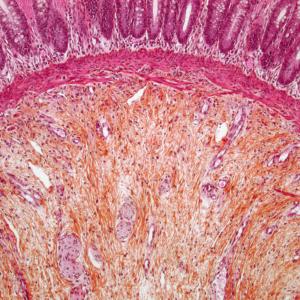This article is part of His Aorta Verged on Rupture. What Happened Next Will Astonish You..
Lionel Warren’s care at the Center for Complex Aortic Disease underscores the importance of entrusting cardiac and vascular repairs to surgeons who possess the skill and experience to handle the most challenging aortic aneurysm cases. Here’s how he was saved by Aubrey C. Galloway, MD, and Thomas Maldonado, MD.
September 30, 2019: The Diagnosis
Warren is referred by his initial surgeon to Dr. Galloway, who sees the huge lump in Warren’s neck and recognizes it as a blood-filled pouch, called a pseudoaneurysm, that has developed along the original suture repair of his ascending aorta.
“It’s rare to have these grow large enough to see them externally,” says Dr. Galloway. “Often, they just tear loose, and the patient dies suddenly.” He recommends immediate surgery. Warren agrees to return a week later.
October 8, 2019: Open Heart Surgery
NYU Langone doctors perform 1,500 open heart surgeries annually, but few are as intricate as this 8-hour procedure. After Warren is connected to a heart–lung machine, his head is packed in ice until his body temperature cools to 63°F, enabling the team to temporarily stop blood flow without damaging brain function.
As expected, the pseudoaneurysm ruptures once Warren’s sternum is opened, but the cooling technique stems the blood loss. The bypass pump is turned off. Dr. Galloway and Deane E. Smith, MD, co-director of the Thoracic Aortic Disease Program, clean out loose blood and clots from the previous surgery. Limited blood flow is restored after 13 minutes.
Dr. Galloway removes the infected stent along with scar tissue and diseased sections of the ascending aorta. He disconnects the innominate and left carotid arteries from the arch and reconnects them closer to the heart, enabling Dr. Maldonado to repair a second aneurysm on Warren’s upper descending aorta later on. “We created a landing zone to insert a stent graft without covering these vital arteries,” says Dr. Galloway.
Finally, he connects a replacement graft from the ascending aorta to the arch, completing the repair. Full circulation is resumed, the patient’s body temperature is returned to normal, the bypass machine is disconnected, and the chest is closed.
November 13, 2019: Recovery
Warren had a minor stroke during the procedure, likely due to the reduced blood flow to the brain. At first, he experiences difficulty speaking and weakness in his hands. As the swelling subsides, he regains full function with the help of the inpatient cardiac and neurocritical care teams. “They did an outstanding job of getting him through a vulnerable phase following the surgery,” says Dr. Galloway. Warren heads home. He’s scheduled to see Dr. Maldonado in the summer.
July 19, 2020: Bypass Surgery
Warren’s aneurysm has grown to nearly a dime in diameter and may rupture within a few years. Repairing it requires two procedures. The first, performed on this day by Dr. Maldonado, involves connecting two arteries to preserve blood flow to the brain and left arm in preparation for surgery to repair the aneurysm, which takes place two days later. “The aneurysm was in a tough spot,” says Dr. Maldonado. “We needed to eliminate the risk of a stroke or other complications.”
July 21, 2020: Minimally Invasive Repair
NYU Langone has been a pioneer in repairing aortic aneurysms through the blood vessels, known as endovascular surgery, and was among the first to use the technique in the delicate aortic arch area. “Ten years ago, open surgery would have been the only option,” says Dr. Maldonado. No longer.
He makes a tiny incision in Warren’s groin and threads a catheter to the aneurysm, using continuous X-ray guidance from a fluoroscope. Once in place, he deploys the stent graft to reline and seal the aorta. The device, in use for only about six months, is engineered specifically for the arch, conforming to its sharp curvature and reducing the risk of collapse. “It’s a big advance for this type of repair,” Dr. Maldonado says.
September 21, 2020: A Positive Prognosis
Two months after Warren’s third procedure at NYU Langone, he gets a favorable report: the repairs have healed beautifully, and there is no sign of further dissection. Warren remains on medication to control his blood pressure, but he is otherwise back to normal—and grateful to Dr. Galloway and Dr. Maldonado. “I’ve got nothing but positive things to say about them,” he says. “They’re why I’m here today.”

